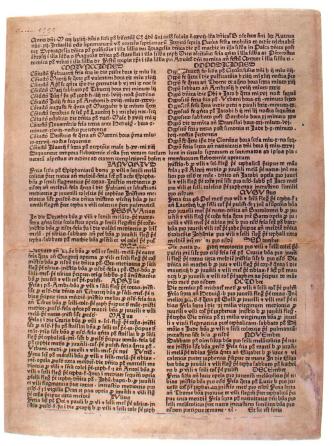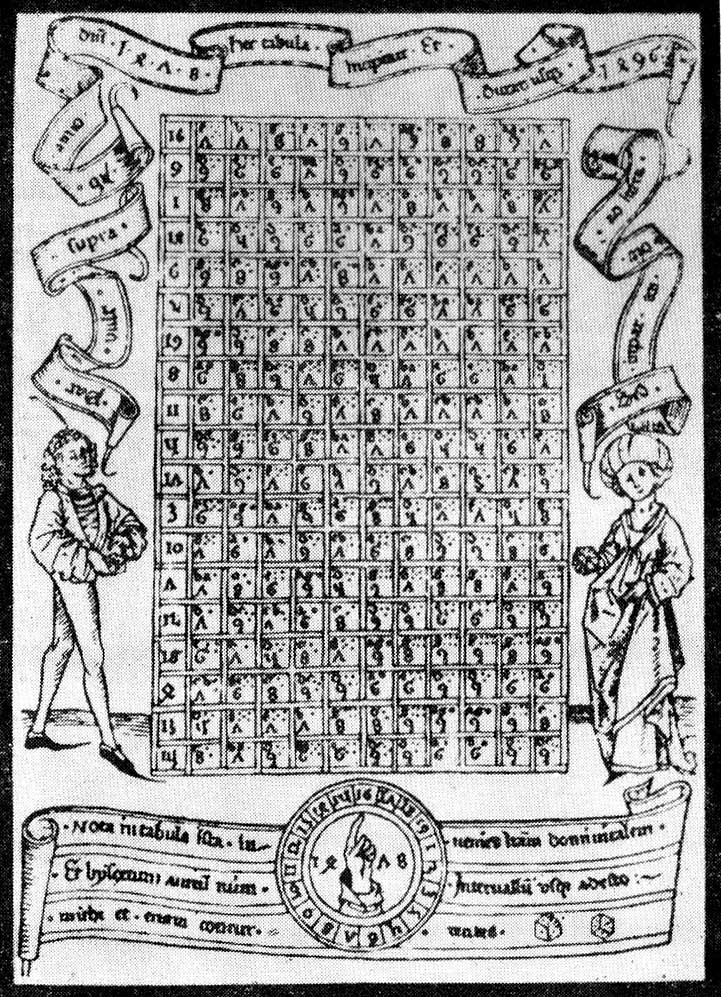Najstarszy drukowany kalendarz polski — jednocześnie najstarszy druk polski! — to „Calendarium anni currentis 1474”, wydrukowany w języku łacińskim w Krakowie w drukarni Kaspra Straubego. Warto dodać, że był tylko o rok późniejszy od najstarszego w świecie drukowanego kalendarza, wydanego w języku łacińskim i niemieckim w Norymberdze! „Calendarium” znajduje się w zbiorach Biblioteki Jagiellońskiej w Krakowie.

Najstarszy kalendarz w języku polskim (zachowany niestety tylko we fragmentach) wydany został w drukarni Jana Hallera w Krakowie w 1516 r. Pierwszy zaś znany nam kalendarz ścienny (przed wojną znajdował się w Bibliotece Publicznej m. Warszawy) wydała drukarnia Unglera w 1531 r. Zamieszczony był w nim m.in. prognostyk „czo któregosz koli dnia ma bycz czyniono abo ostrzegano” oraz przepisy, kiedy najlepiej kupować konie, sprzedawać zboże, uprawiać pole, żenić się itp.
Sporym uznaniem cieszyły się w XVI w. kalendarze Mikołaja Szadka, wydawane pod rozmaitymi tytułami (np. „Wysłowienie znaków niebieskich… pilnie… ułożone” z 1528). W II połowie XVI w. ustabilizowały się dla kalendarzy stałe tytuły, wydawane w różnych redakcjach i wydaniach niekiedy przez dziesiątki lat.
Wynalazek druku wpłynął korzystnie na zwiększenie popularności kalendarzy. Stały się teraz dostępne również dla „zwyczajnych” szlachciców i mieszczan. Odbijali je w setkach, a nawet tysiącach egzemplarzy znani drukarze krakowscy. Robili na nich zresztą wcale niezły interes. Świadczy o tym choćby spór krakowskich oficyn Wietora i Szarfenberga o przywilej na wydawanie kalendarzy w Polsce, spór zresztą bezpodstawny, bo królowie polscy takiego przywileju nie dali żadnemu z nich. Kalendarze mogli w Polsce wydawać wszyscy, dzięki czemu rósł stale ich poziom i atrakcyjność. Zwłaszcza — po reformie gregoriańskiej z 1582 r. Kalendarze z tego okresu zajmowały się wszystkim: dawały rady i wróżby, informowały o wojnach, pożogach, poselstwach, drogach, wierze chrześcijańskiej, mahometańskiej i żydowskiej, zamieszczały wiadomości o szczęściu i powodzeniu, słowem — były wydawnictwami do czytania, stanowiąc przy tym wcale niebłahe źródło wiedzy o kraju, świecie i życiu.
Z czasem zaczęły powstawać i kalendarze „branżowe”, „specjalistyczne”, adresowane do określonych warstw społecznych lub zawodowych, bądź poświęcone tylko jednej dziedzinie wiedzy. Spełniały też coraz częściej funkcję polityczną i wychowawczą. Uczyły i bawiły.
W 1665 r. pojawił się u nas po raz pierwszy kalendarz lekarski z wskazówkami na temat higieny i dietetyki. I drugi — bardzo ciekawy, „sowizdrzalski”, pod nieco mylącym tytułem „Kalendarz wieczny”. Zdaniem Aleksandra Brucknera — „najwyuzdańsza” książeczka polska, którą ocalił od zakazu cenzury oficjała krakowskiego chyba tylko nie budzący podejrzeń tytuł. Może przesada. Ale na pewno kipiał życiem. Już zresztą wierszyk na okładce mówił sam za siebie:
„Drukowano na wietrze a mgłą przyciskano,Deszcz papiru nie polał, przecie go wydano”.
Przeważały jednak kalendarze zwyczajne, pomyślane wszystkoistycznie, pełne wróżb i prognostyków. Przykładem może być „Prognosticon albo Przestroga z biegów niebieskich” Mikołaja Brożka, wydany w 1667 r. w Krakowie:
„Podczas lata będą panować gorączki ustawiczne, tercjany, maligny, kwartany, słabość żołądka, oczu i uszu, bóle, twarzy zepsowanie, serca drżenie i insze zaraźliwe choroby. Na jesień gorączki odmienne, żołądka zamulenie, suchoty, zaskórne wody, dychawice, ciężkie tchnienie. Na zimę boków bolenie, zapalenie wątroby, chrapki, bóle piersi, apopleksje i insze zwyczajne naszym krajom choroby”.
A na wiosnę? — „Zawroty głowy, melankolie, zaraźliwe choroby, płynienie krwi, głowy bolenie, kaszle, liszaje, wrzody, członków i stawów bolenie”, przy czym —„niejednego żelazem naznaczą”.
A więc — same klęski! Miały one nie ominąć nawet ciężarnych matron, dla których —„nie chcąc ciężaru przydawać” — taki oto ów uczony, bądź co bądź, mąż prognostyk wykoncypował:
„Na wiosnę nie będą miały pociechy dla swojej Pani z Domu śmierci spoczywającej… Lato pocieszniejsze, ale z wielkim zdrowia niebezpieczeństwem. Jesień z zatrzymania płodu i inszych trudności bardzo się nada. Zima prawie o życiu wątpi i trzeba się bardzo szanować”.
Aż dziw, że ówczesne kobiety mimo to rodziły, a naród od różnych klęsk i pomorów nie wyginął. Na szczęście, nie wszyscy wówczas czytali kalendarze.

